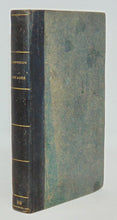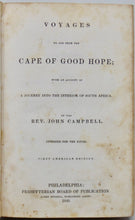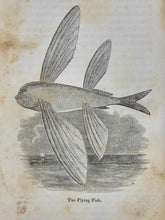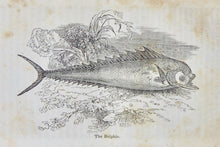
Campbell, John. Voyages to and from the Cape of Good Hope; with an Account of A Journey into the Interior of South Africa; Intended for the Young. Philadelphia: Presbyterian Board of Publication, 1840. First American Edition. [9646]
Black calf spine with lines & titles in gilt, teal cloth boards, boards soiled, joints fine, 6 1/4 x 4 inches. 271 pp., some foxing, tight. With several wood engravings, see list below. Good. Hardcover.
An account of the voyage to the Cape, Cape Town, the inland journey to Pacaltsdorp and Bethelsdorp, descriptions of those places, and an account of the voyage from the Cape of Good Hope to England.
Wood engravings of The Flying Fish; The Dolphin; The Bonito; The Probecis Seal; The Crested Penguin; The Cachelot, or Spermaceti Whale; and a text engraving of The Spotted Hyena of Pennant.
Rev. John Campbell (1766-1840), “philanthropic ironmonger and London Independent minister. Educated at Edinburgh High School and brought up in the Relief Church, he became an ironmonger in the city’s Grassmarket in 1786. His correspondence and friendship with John Newton, rector of St. Mary Woolworth, London, influenced his views and led in 1795 to fresh awareness of the gospel. Thereafter, his shop became a principal clearing-house for evangelical activity in Scotland and for communication between the leaders of the Evangelical Revival in the south [of Scotland] and those of the similar persuasion in the Scottish churches. His interests were broad, embracing children’s literature and religious tract publication, Sunday schools, relief of the poor and orphans, and the reform of prostitutes. His early practice in exhorting those who attended the schools established in villages near Edinburgh led him in 1797 to become a lay preacher in conjunction with James Haldane. The resulting attachment to itinerancy continued throughout his life…Drawn towards Independency, he left the Church of Scotland in 1799…As director of the London Missionary Society he undertook two extensive tours of mission stations in Cape Colony and the interior of Southern Africa between 1812-1814 and 1818-1821…” – Dictionary of Scottish Church History and Theology.







